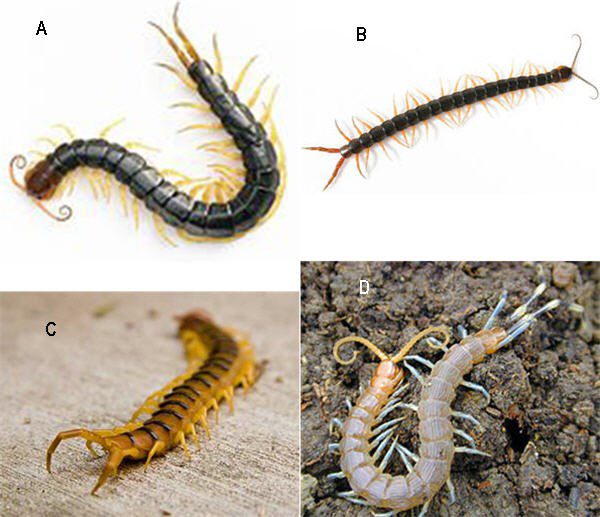Quick and Effective Treatment for Centipede Bites: A Lifesaver for Victims Sometimes, you may encounter a centipede in your home, which can be quite frightening. If bitten by a centipede and not treated promptly, it can lead to poisoning and, in some cases, even death. So how should you handle a centipede bite?
Essential Information About Centipede Bites
Centipedes are venomous insects with a pair of fangs that contain toxins. When they bite, the venom enters the victim’s body, causing symptoms such as headaches, fever, nausea, convulsions, and even coma. The larger the centipede, the more venom it injects with each bite, which can be life-threatening if not treated promptly.

Different Scenarios of Centipede Bites
Scenario 1: The bite only causes a mild skin allergy that resolves quickly.
Scenario 2: After being bitten, the victim experiences dizziness, ringing in the ears, vomiting, and convulsions. This indicates that the toxin has penetrated deeply into the body and the situation is very critical.
Symptoms of Poisoning from Centipede Bites
All centipede species possess venom, and the severity of poisoning depends on their size and the number of bites (one or multiple).
Local Symptoms: There are two bite marks, with severity ranging from mild to severe, including:
- Severe pain, swelling, redness, blisters, and possible superficial necrosis at the bite site lasting several weeks.
- Localized muscle weakness
- Itching
- Altered sensation
- Swelling
- Lymph node enlargement
- Possible transient bleeding.
Systemic Symptoms:
- Fever, fatigue, body aches.
- Rapid breathing, coughing, sore throat
- Lymphangitis, swollen lymph nodes
- Nausea, vomiting, abdominal pain, diarrhea.
Onset of Symptoms:
Symptoms appear immediately after the bite, with pain and swelling that gradually decrease, but swelling may last 1-2 days. Most local symptoms resolve within 1-2 days, while systemic symptoms, if present, may last 4-5 hours.
Treatment for Centipede Bites
A centipede bite can happen unexpectedly, especially if you accidentally touch or step on one. However, before applying any remedies for centipede bites, the first step is to find any available piece of string nearby. Next, use it to tie above the bite site (apply a tourniquet). This action aims to restrict the venom from reaching the heart. After this step, you can continue treatment with other remedies.
For Scenario 1: If the bite causes only a small wound with no venom injected, applying a small amount of medicated oil to the wound will suffice.
For Scenario 2: If the victim has been poisoned by the centipede and the toxins are affecting their body, more urgent treatment is required.

There are various effective medications for treating centipede bites. The Dao ethnic people often use two remedies to apply to the bite: the saliva of a chicken or a snail (either land or water snails can be used).
In fact, chickens are considered the natural enemy of centipedes. Chickens have a mysterious relationship with centipedes in particular and with the universe and humanity in general. The most critical role of chickens as “killers” of centipedes is their saliva. Chicken saliva can neutralize centipede venom and digest the centipede into a tasty meal for the chicken. Thus, chicken saliva has become a very effective remedy for centipede bites.
Snail Saliva: Similar to chickens, snails also have a relationship with centipedes, and importantly, the mucus from snails can also neutralize centipede venom.
How to Use the Remedy
When bitten by a centipede, the first step is to take cloth, string, or anything that can be tied to create a tourniquet above the bite site to limit the venom’s flow toward the heart. Then, catch a chicken, use your finger to stimulate the chicken’s throat to extract saliva, and apply it to the bite area. Doing this two or three times will alleviate the pain. If no chicken is available, you can use snails as a substitute since there is a mysterious connection between snails and centipedes.
Useful Tips for Treating Centipede Bites
- Mash garlic and apply it to the bite; it quickly relieves pain.
- Chew small pieces of rooster comb seeds or mash them, drink the juice, and apply the pulp to the bite area.
- Wash a handful of purslane, mash it, and apply it to the bite.
- Clean and mash burdock root to apply.
- Crush a small handful of sesame seeds and apply them to the wound.
- Wash a handful of peppermint leaves, mash them, and apply.
- Wash bitter gourd seeds, mash them, and apply, or add a little vinegar and gargle, swallowing slowly while applying the residue to the painful area.
- Peel taro stalks, mash them, mix with coconut oil residue and betel lime, and apply to the bite for quick recovery.
- Use mashed lemon balm or garlic mixed with coconut oil residue and betel lime, applying to the bite.
- Crush chili leaves and apply to the wound until the pain subsides, repeating 1-2 times a day until healed.
Note: All the above herbs and roots should be thoroughly washed, and applied with a light bandage to prevent the remedy from falling off. Accompany this with some greens to help detoxify the poison.
As our ancestors often said: Prevention is better than cure. Therefore, keep your home free of items such as brooms, old wooden furniture, carpets, and wet fabrics to avoid creating a habitat for centipedes. Do not allow children to play in damp areas with lots of old bricks and debris, which can increase the risk of centipede bites. Especially, it is crucial to conduct thorough cleaning around the house and seal drains to eliminate centipedes.
To ensure children’s safety, parents should regularly remind them not to go to damp places or provoke centipedes. When sleeping, both adults and children should take care to use mosquito nets to prevent insects from entering and causing danger.
If you notice a child with a strange bite, prompt first aid is essential, and you should immediately take the child to the nearest medical facility.



















































